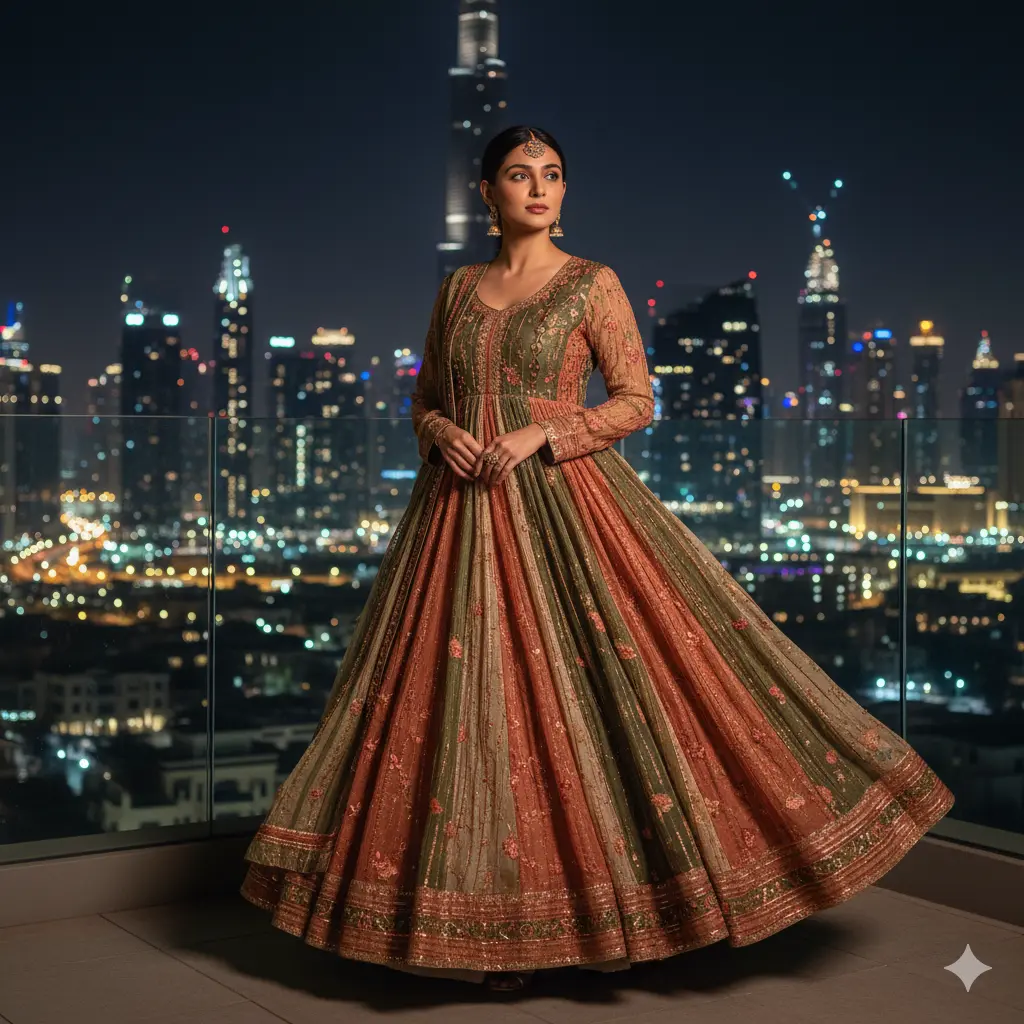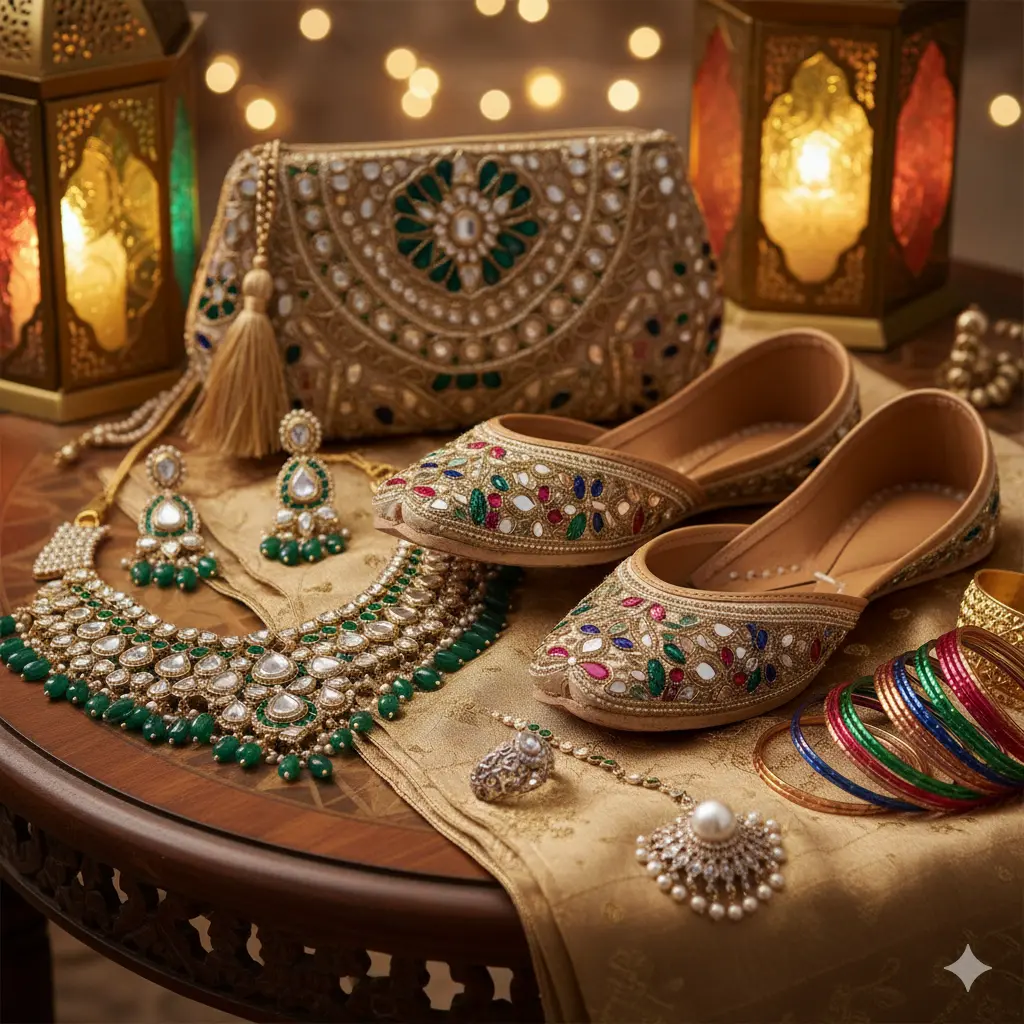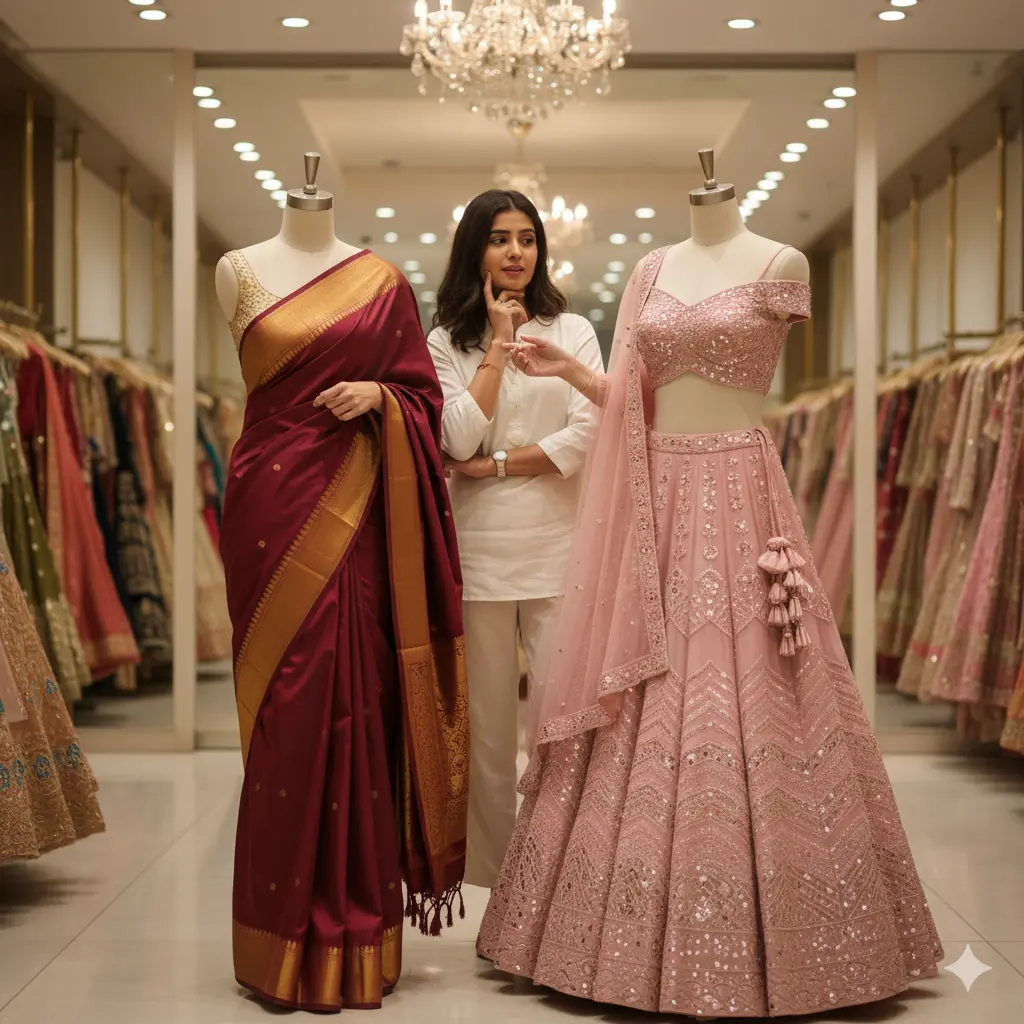Explore the top UAE fashion trends for 2025, from metallics and earth tones to artisanal drapes. See how global runway s...
Indian Textile Arts: Bandhani, Ikat & Block Print Guide
Threads of Tradition: A Guide to India's Iconic Textile Arts
Step into an Indian textile market and you're immediately immersed in a kaleidoscope of colour, texture, and tradition. These aren't just bolts of fabric—they are expressions of centuries-old legacies wrapped in wearable art.
Indian textile arts are more than embellishments; they are living heritage. Each technique—Bandhani, Ikat, and Block Print—tells a different tale of time-honoured skill. In this post, we journey through these three celebrated textile techniques. You’ll discover what is Bandhani, learn about the Ikat dyeing process, and explore the beauty of block printing Jaipur is famed for. Let’s celebrate fabrics that don’t just drape the body—they dress the soul.
The Timeless Tie-Dye: Unraveling the Magic of Bandhani
What is Bandhani? The Art of a Million Knots
Derived from the Sanskrit word "Bandhan" meaning "to tie," Bandhani is India’s own refined take on tie-dye. It is a complex technique that involves tying thousands of tiny knots by hand into intricate patterns before dyeing the fabric. Common designs include:
- Bindi: Dots, often arranged in symmetrical hive-like formations.
- Chakli: Squares or geometric patterns within circles.
- Leheriya: Wave-like stripes, especially popular in Rajasthani turbans and dupattas.

A Vibrant Legacy from Gujarat and Rajasthan
This ancient art has remained alive in two main regions—Gujarat and Rajasthan. In Gujarat, the Khatri community of Kutch are legendary for their detailed Bandhani work. Rajasthan adds its own flair, with regional colour palettes like maroon, yellow, and green. Bandhani is deeply symbolic, often worn at weddings and festivals to signify prosperity.

The Art of Resist-Dyeing: Exploring the Intricacy of Ikat
Understanding the Unique Ikat Technique
Ikat is one of the world’s oldest and most sophisticated dying techniques. The yarns are tie-dyed before the fabric is even woven. This painstaking process produces the signature "hazy" edges of Ikat patterns. There are three major types of Ikat:
- Warp Ikat: Only the warp threads are dyed before weaving.
- Weft Ikat: Weft threads hold the design, producing softer patterns.
- Double Ikat: Both warp and weft are dyed with precision so patterns align perfectly during weaving. Patan Patola is a renowned example.

Tracing Ikat's Indian Mastery
India has three distinct Ikat hubs, each with unique expressions: Pochampally (Telangana), known for bold geometric patterns; Sambalpuri (Odisha), featuring curvilinear motifs; and Patan Patola (Gujarat), the epitome of Double Ikat, historically revered by royalty.

A Masterclass in Indian Textile Arts: The Enduring Charm of Block Printing
The Rhythmic Process Behind the Print
Block printing is one of the earliest and most sustainable textile techniques in India. The process starts with artisans hand-carving detailed motifs onto wooden blocks, which are then dipped in natural dyes and pressed onto fabric. Natural and vegetable-based dyes from indigo, madder root, and turmeric enhance skin comfort and feel softer over time.
The Heritage Hubs of Block Printing
While this art form is found across India, three regions stand out for their unique styles and techniques:
- Sanganer and Bagru (Jaipur, Rajasthan): Jaipur is the heart of block printing. Sanganer is famous for fine floral motifs, while Bagru uses a distinctive mud-resist dyeing technique called dabu .
- Ajrakh (Kutch, Gujarat): A complex, multi-stage process resulting in a striking fabric with deep red and indigo hues.
- Kalamkari (Andhra Pradesh): Literally meaning "pen craft," this is a hand-painted and block-printed textile art.
These textiles aren't just beautiful—they are a testament to India's rich artistic heritage and a story told through the painstaking work of an artisan's hands. Choosing a hand-blocked piece is a way of supporting these traditions and owning a piece of living history.
Share:
 العربية
العربية





